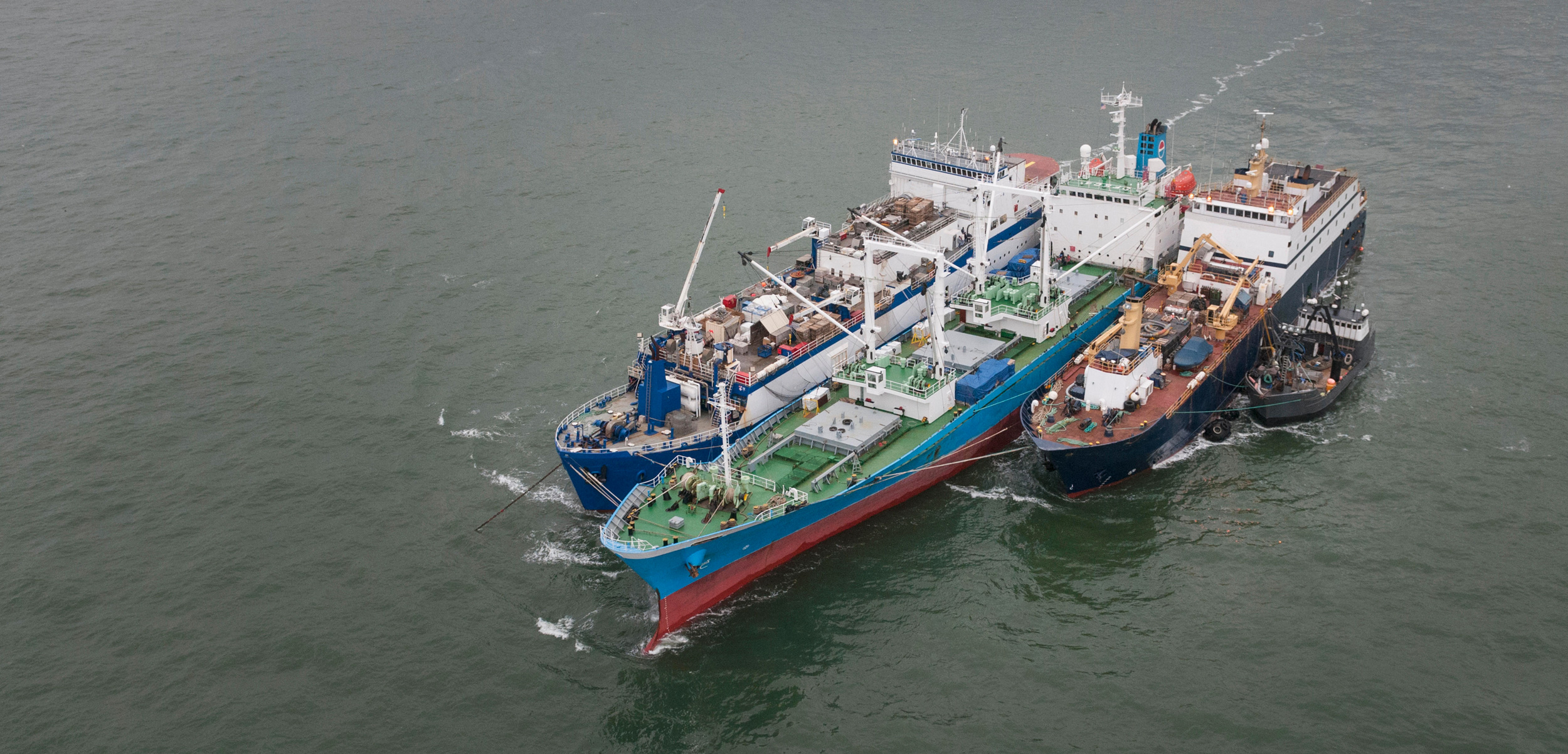Big Brother at Sea
Satellites are spying illegal fishing from space.
Article body copy
Five hundred kilometers off the coast of Ecuador, the Colombian vessel American Eagle, a purse seiner, meets a refrigerated cargo ship. The two ships drift slowly together in the tropical water for eight hours. Encounters like this are common practice, allowing ships on long fishing voyages to refuel and transfer their catch—likely what the two ships were doing. But the practice, called transshipment, can also disguise nefarious acts, such as smuggling illegally caught fish or even human trafficking.
Ship to ship transfers can be made quickly and covertly on the high seas, leaving law enforcement officials unaware of the passage of illegal cargo in this watery Wild West. And it’s no small problem: a 2014 study found that up to a third of wild-caught seafood sold in the United States was harvested illegally. To combat this shadowy business, Global Fishing Watch, is monitoring the world’s fishing fleets by satellites, hoping to cast light on the dark places beyond national borders.
Global Fishing Watch monitors the positions of boats by tracking the broadcasts from their onboard automated identification system (AIS) transponders. All passenger ships, vessels larger than 300 gross tonnage, and fishing vessels exceeding 100 gross tonnage, are required by the International Maritime Organization to transmit their position.* The system’s main purpose is to reduce the likelihood of collisions between ships, but Global Fishing Watch analysts found they can follow a vessel, decipher its fishing activity, and see where it meets other ships.
With data from AIS and other satellite tracking systems, the team has created a global map of transshipping activity. They’ve found that ships cluster outside the boundaries of exclusive economic zones—areas where marine resources are regulated—raising suspicions that the transshipments are associated with illegal fishing.
Despite the extensive vessel tracking, the team can’t say for sure what ships like the American Eagle are up to.
“We may be talking about the issue of transshipment, but what we’re detecting really are what we call vessel rendezvous,” says Nathan Miller, a data scientist at SkyTruth, who worked closely with Global Fishing Watch.** “These are two vessels that get close to each other and potentially meet. We don’t even know if they actually meet—all we can detect is they get very, very close together for an extended period of time.”
The best they can do, says Bjorn Bergman, a data analyst for SkyTruth working on the project, is provide the data for authorities to dig into further.** Recently, Global Fishing Watch data was passed to Ecuadorian authorities looking into the transportation of an illegal shark catch near the Galapagos Islands.
“The high seas present a big challenge because that’s where most of the slavery and much of the illegal fishing is, so [Global Fishing Watch] is fantastic to have,” says Daniel Pauly, a fisheries scientist at the University of British Columbia. “This gives additional weapons to hard-pressed authorities in various countries.”
All of Global Fishing Watch’s data is publicly available on their website, where it’s posted just days after the signals are received. Automated notifications will soon be available through the website can help port authorities, marine conservationists, and other interested parties monitor specific regions for suspicious behavior.*** The data is also valuable to companies that want to tell consumers where their seafood comes from.
“Everything that we’re doing … is really about transparency,” says Miller. “That’s going to be the way in which positive change happens.”
*This sentence was updated to add the fact that fishing vessels also use AIS.
**Both Bjorn Bergman and Nathan Miller work for SkyTruth, not directly for Global Fishing Watch.
***This sentence was updated to reflect that while automated notifications will be available soon, they’re not available yet.

